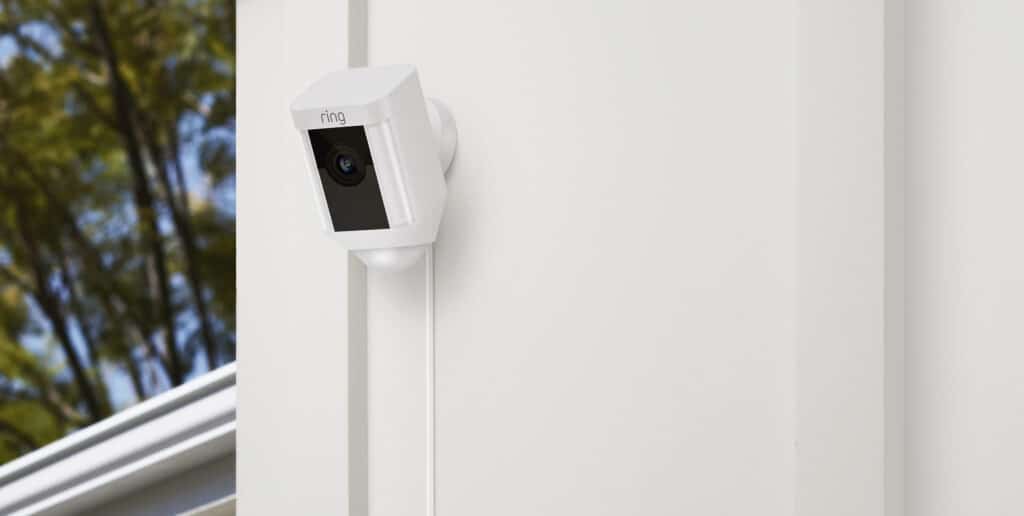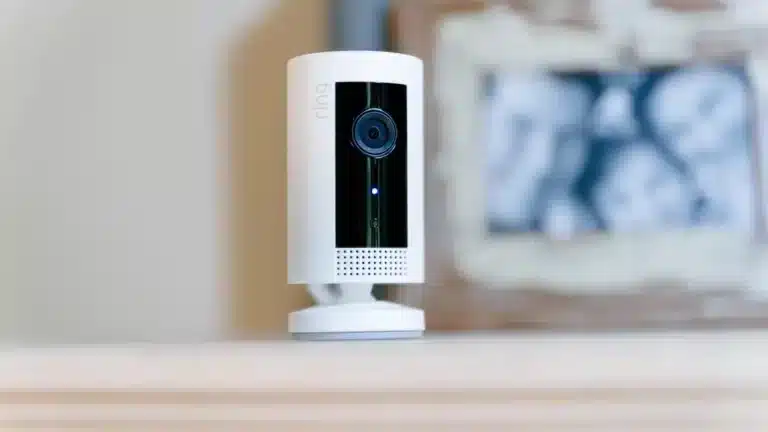Introduction
Does Ring Indoor Camera Record All The Time: The Ring Indoor Camera is a compact, state-of-the-art surveillance solution that provides users with real-time video monitoring capabilities within their homes. Designed by the industry-leading company Ring, known for its robust lineup of home security products. This camera offers an additional layer of peace of mind to users seeking comprehensive security coverage.
One common question that arises when considering the purchase of a surveillance camera, particularly the Ring Indoor Camera, is whether it records continuously or only captures specific events. Understanding the recording capabilities of this device is crucial in evaluating its suitability for different security needs.
By exploring the technical specifications and features of the Ring Indoor Camera. We aim to shed light on the camera’s recording capabilities and provide you with a comprehensive understanding of its functionality. We will also discuss the benefits and potential limitations associated with continuous recording. Enabling you to make an informed decision regarding your home security requirements.

Do Ring cameras continuously record?
Ring Cameras and Doorbells do not support continuous or 24/7 recording. Your Camera will record when motion is detected, or when the Live View is activated. Subscribing to the Ring Protect plan unlocks access to video recording, as without a plan you can only access the Live View.
Ring cameras do not continuously record. Instead, they utilize motion-activated recording to conserve storage space and focus on capturing relevant events. When a Ring camera detects motion within its field of view. It initiates recording, capturing a video clip of the triggered event. This motion detection feature ensures that the camera captures critical moments. Such as someone approaching the door or movement in the monitored area.
The technology behind ring cameras involves sophisticated algorithms that examine movement within the image’s pixels. When something unexpected happens, such a person passing by or a car pulling into the driveway, the alarm goes off. The camera triggers recording and alerts the user through the Ring app. This enables homeowners to receive real-time notifications on their smartphones or other connected devices. Allowing them to monitor their property remotely and take appropriate action if necessary.
They offer a useful feature called “Live View” that allows users to manually access the camera’s live video feed at any time. By opening the Ring app and selecting the desired camera. Users can instantly view the live video stream, providing an on-demand visual check of their surroundings. This feature is particularly helpful for real-time monitoring. Such as checking in on pets, verifying package deliveries, or simply ensuring the security of the premises.
How long do Ring indoor cameras record for?
When set to Auto, motion can be captured for up to 120 seconds, though actual recording times will vary.
The Ring’s cameras can be programmed to begin recording automatically in the event of motion or manually at the user’s discretion. When the camera detects movement inside its range of vision, such as when a person enters the monitored area, it begins recording.
Typically, Ring indoor cameras record video clips that range from a few seconds up to several minutes. The Ring app allows users to change the length of the recording to suit their individual requirements and preferences. Shorter video clips conserve storage space and may be sufficient for capturing brief events, while longer clips provide more comprehensive coverage of ongoing activities.
The Ring indoor cameras do not offer continuous recording by default. Instead, they focus on capturing relevant events to conserve storage and optimize efficiency. This motion-activated recording approach ensures that users are notified and provided with video footage of specific incidents or movements that occur within the camera’s range.
How do I know if my indoor ring camera is recording?
Flashing Light Patterns on Indoor Cam
- Camera is starting up. Solid blue light.
- Firmware update in progress. Blue light that blinks on and off, then stays on for two seconds.
- Camera is recording. Solid blue light.
- Two-way talk/speaker enabled. Very slow, pulsing blue light.
In-App Status: The Ring mobile app is a central hub for managing and monitoring your Ring devices. By opening the Ring app on your smartphone or tablet, you can check the status of your indoor camera. If the camera is actively recording, you will see a live view or playback of the captured footage on the app’s home screen.
Motion Detection Alerts: Motion detection is built into ring cameras to automatically start and stop filming. If you have enabled motion detection alerts in the Ring app settings, you will receive notifications on your mobile device whenever the camera detects motion and starts recording. These alerts serve as a clear indication that your indoor camera is actively capturing video.
Event History: The Ring app provides an event history log that keeps track of recorded video clips. By accessing the event history section, you can review the timeline of recorded events and play back the corresponding footage. If you see recent events in the log, it confirms that your indoor camera has been recording.
Ring Protect Subscription: To access and review recorded video clips, Ring cameras require a Ring Protect subscription. If you have an active subscription, you can log in to your Ring account on the Ring website or app and access the recorded footage. If there are video clips available for playback, it indicates that your indoor camera has been recording.

Do Ring cameras record at night?
In the Ring app, you have the option to turn Color Night Vision on or off for select Ring Doorbells and Cameras. Color Night Vision adds color to video in low light for improved clarity and motion detection. With the feature turned off, your Ring device will show video captured at night in black and white.
Infrared Night Vision: Most Ring cameras have infrared (IR) LEDs, which produce virtually invisible infrared light. This technology allows the camera to capture video footage in complete darkness. When the ambient light levels drop below a certain threshold, the IR LEDs automatically activate, illuminating the area in front of the camera. This enables the camera to see in the dark and record black and white footage with impressive clarity.
Adjustable IR Range: Ring cameras often offer adjustable IR range settings. This feature allows users to customize the distance over which the camera’s IR LEDs can illuminate the scene. By adjusting the IR range according to the specific requirements of the monitoring area, users can optimize the camera’s performance and ensure sufficient illumination for clear nighttime recordings.
Enhanced Sensors and Imaging: Ring cameras utilize advanced sensors and imaging technologies to enhance their performance in low-light conditions. These technologies include high-dynamic-range (HDR) imaging, which helps balance the contrast between bright and dark areas in the frame, and wide dynamic range (WDR) sensors that improve image quality and details in challenging lighting situations.
How do I stop my Ring camera from recording?
Using the Motion Detection Control to Disable Recording
- Open your Ring app.
- Tap the three lines on top left corner of your dashboard.
- Tap Devices.
- Tap the device you want to adjust.
- On the device dashboard, toggle the Motion Detection slider to off.
- Tap on Stop Recording.
Disabling Motion Detection: Ring cameras rely on motion detection technology to initiate recording. By disabling motion detection, you can prevent the camera from automatically recording when it detects motion within its field of view. To disable motion detection, open the Ring app on your mobile device, select the camera you want to modify, go to the camera’s settings, and toggle off the motion detection feature.
Scheduling Modes: Ring cameras offer the option to schedule different modes for different times of the day. By setting a specific schedule, you can configure the camera to stop recording during certain periods. For example, you can create a schedule to disable recording during your regular work hours or when you are at home. To set up a schedule, access the Ring app, go to the camera’s settings, and navigate to the modes or scheduling section.
Privacy Mode: Ring cameras provide a privacy mode feature that allows you to temporarily disable video and audio recording. The camera will cease taking pictures and reduce its overall noise level when set to silent or private mode. You have the option of activating Ring’s private mode using the app or an intelligent home assistant.
Does Ring record when WIFI is down?
Your Ring Camera will still be able to record footage and store it locally without an internet connection, but you won’t be able to access this footage until the device is reconnected to the internet.
Ring cameras are unable to transmit video footage to the cloud in real-time. This means that during a Wi-Fi outage, the camera cannot upload recordings to the Ring cloud servers. Ring cameras have built-in storage that allows them to continue capturing video locally, even when the Wi-Fi connection is temporarily unavailable.
Most ring cameras incorporate some sort of internal storage, be it an SD card or something else entirely. While the Wi-Fi is being reconnected, the video files are stored in this temporary local buffer. Once connectivity is restored, the camera begins uploading its local recordings to the Ring cloud servers.
It’s worth noting that the local storage capacity varies depending on the specific Ring camera model and any additional storage options you have set up. Some Ring cameras have a limited amount of internal storage, while others may offer the option to expand storage using removable SD cards.
While the camera will continue to record locally if there is a Wi-Fi interruption, you will not be able to access it remotely to view live feeds or previously recorded footage until the network is back online. This means you won’t be able to view the camera’s live stream, receive motion alerts, or access previous recordings through the Ring app or website.
Does indoor Ring record audio?
Yes, by default the Ring Indoor cam supports sound – but this can be turned off. It records sound once it has started recording, unless you turn this off by launching the Ring app: … and selecting your Ring Indoor Cam. Going to ‘Device Settings’
Two-Way Audio: Multiple Ring camera models allow for two-way audio communication thanks to their integrated microphones and speakers. This feature allows users to listen to audio from the camera’s environment and speak through the camera remotely using the Ring app. It facilitates real-time interaction with visitors, family members, or potential intruders, enhancing the functionality and versatility of the camera.
Audio Recording: In addition to two-way audio, Ring cameras can also record audio along with video footage. When the camera is actively recording, whether triggered by motion detection or manually initiated by the user, it captures both visual and audio elements of the scene. This audio recording feature provides valuable context and additional evidence in situations where sound plays a crucial role.
Privacy Considerations: The audio recording capabilities of Ring cameras. Different regions and jurisdictions may have specific laws regarding audio recording. And it’s essential to familiarize yourself with these regulations to ensure compliance. In some cases, permission from the subjects of a recording is required. Particularly in scenarios where privacy expectations are higher, such as in private spaces like bedrooms or bathrooms.
Why does Ring stop recording at night?
Often times, a lack of motion at night can be improved through settings adjustment and lighting the area. Although you’ve already changed some settings, try testing motion at night yourself, to see where the motion does and does not detect you. This will help you to fine tune your motion settings in the Ring app.
Motion Detection Sensitivity:
Most ring cameras will only begin recording when they sense motion.The sensitivity of the camera’s motion detector can be changed at night to prevent false alerts caused by things like shadows, pests, or shifts in lighting. As a result, the camera may require more significant motion events to initiate recording. Which can give the impression that recording has stopped.
Limited Motion Events:
Nighttime environments generally experience reduced activity compared to the daytime. With fewer people or objects moving within the camera’s field of view. Reduce motion event recording frequency. It may appear that the camera has ceased recording. Less happens.
Lighting Conditions:
The performance of Ring cameras can be influenced by lighting conditions at night. While Ring cameras are equipped with infrared (IR) LEDs for night vision, their range and effectiveness may vary depending on factors such as the camera model. IR settings, and the distance between the camera and the subject. If the area being monitored is inadequately illuminated. It may affect the camera’s ability to detect motion accurately and capture clear video footage.
User Settings:
User choices and setups affect Ring cameras’ nighttime behavior. For instance, users can schedule specific modes or adjust settings to control the camera’s behavior during different times of the day. If a specific mode or setting limits or disables recording during certain nighttime hours. It may appear as if the camera has stopped recording.

Conclusion
The Ring Indoor Camera focuses on capturing important moments. Such as movement in the camera’s field of view, triggered events, or suspicious activities. This feature allows users to receive notifications and review recordings when necessary. Providing an effective means of monitoring their premises and responding to potential security threats.
The selective recording approach of the Ring Indoor Camera offers several advantages. First and foremost, it optimizes storage usage, ensuring that only relevant footage is saved. To quickly locate and review specific events without the need to sift through hours of non-essential footage. This convenience is invaluable in cases of incident investigation or simply checking in on loved ones or pets.
The absence of continuous recording may not suit all security requirements. Some users may prefer a camera that records 24/7 for comprehensive coverage or to maintain a detailed record of activities. In such cases, alternative surveillance solutions or additional cameras that specialize in continuous recording may be more suitable.

